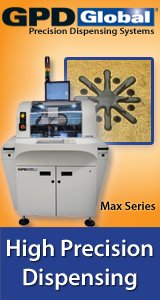Printed Circuit Board Assembly & PCB Design Forum
SMT electronics assembly manufacturing forum.
- SMTnet
- »
- Electronics Forum
- »
- Fiducial recognition using laser
Fiducial recognition using laser
![]() Many years ago I remember the Philips CSM series SMT machine...
- Apr 01, 2004
by
Mike
Many years ago I remember the Philips CSM series SMT machine...
- Apr 01, 2004
by
Mike
![]()
![]()
![]() Are you sure it was measuring a fid? Is it possible it was ...
- Apr 01, 2004
by
Are you sure it was measuring a fid? Is it possible it was ...
- Apr 01, 2004
by
![]()
![]() Yup. It was definitely checking the fiducials as well as the...
- Apr 02, 2004
by
Yup. It was definitely checking the fiducials as well as the...
- Apr 02, 2004
by
![]()
![]() Why not use tooling pins (locating pins)? Sounds like the s...
- Apr 02, 2004
by
Kuru
Why not use tooling pins (locating pins)? Sounds like the s...
- Apr 02, 2004
by
Kuru
![]()
![]()
![]() Ken,
You'd think so but the tooling pins only register to...
- Apr 02, 2004
by
Mike
Ken,
You'd think so but the tooling pins only register to...
- Apr 02, 2004
by
Mike
![]()
![]()
![]() We had a similar system on the Siemens machines, quite some ...
- Apr 03, 2004
by
Stefan Witte
We had a similar system on the Siemens machines, quite some ...
- Apr 03, 2004
by
Stefan Witte
![]()
![]()
![]() I have used tooling holes and fiucial registration since the...
- Apr 03, 2004
by
I have used tooling holes and fiucial registration since the...
- Apr 03, 2004
by
![]()
![]() Ken,
Thanks for the feedback. Unfortunately (or fortunate...
- Apr 12, 2004
by
Mike
Ken,
Thanks for the feedback. Unfortunately (or fortunate...
- Apr 12, 2004
by
Mike
![]()
- SMTnet
- »
- Electronics Forum
- »
- Fiducial recognition using laser






